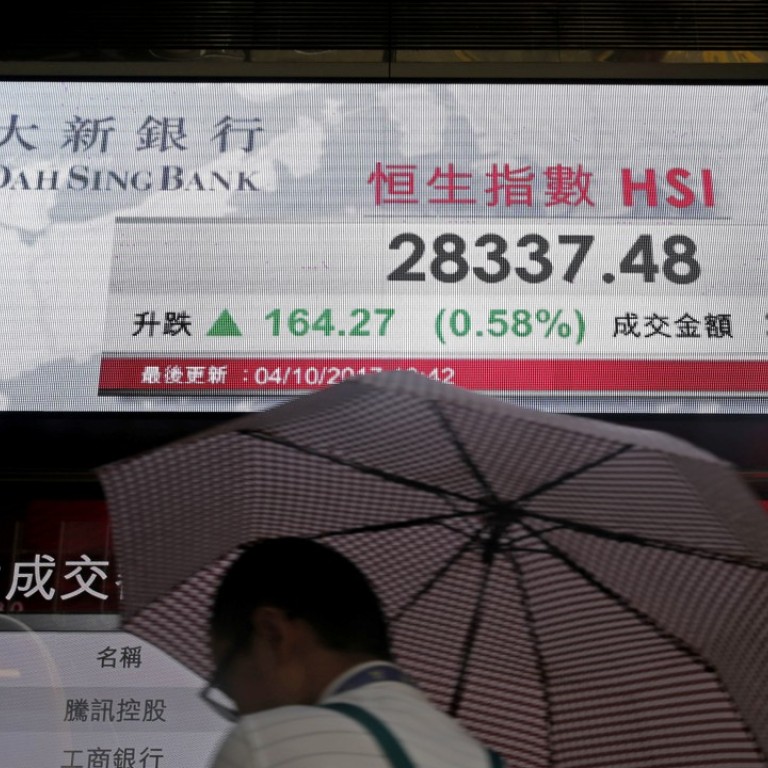
China’s plan for a soft landing hinges on bank lending
‘We think the economy has passed its cyclical peak, and will face increased headwinds from a cooling housing market and reduced fiscal support in 2018’
The People’s Bank of China (PBOC) answered the call of the State Council for providing more support to small and medium-sized enterprises (SMEs) by announcing a targeted easing of banks’ reserve requirement ratio (RRR) last week.
The RRR cut contains two tiers depending on banks’ lending to SMEs, micro businesses, start-ups and the agricultural sectors. These include: 1) a 50 basis point cut for those who lend more than 1.5 per cent of their loan books in 2017 to the targeted entities; 2) a further 100 basis point reduction for those who lend more than 10 per cent of their books.
Different from a regular RRR cut, the current policy change contains two novelties. First, it is designed to benefit banks with more exposure to the targeted sectors, and hence, encourage more lending to the “under-served” segments of the economy.
Second, the implementation starts in 2018, to partly offset the tightening effect from the macro-prudential regulation and a possible slowdown in the economy.
These innovations in policy design should, in our view, help the PBOC to achieve three things:
First, it helps to avoid sending a strong easing signal, which would run counter to the official stance of “prudent monetary policy”. Unlike a universal RRR cut, the PBOC has stressed the “targeted” nature of the move and that it is designed to drive liquidity to the under-served parts of the economy.
Managing the signalling effect is important for two reasons. 1) The Chinese economy has been performing well this year, with steadily rising inflation. Significantly easing policy at this juncture could mislead the market into thinking that Beijing is concerned about the economic outlook. 2) The campaign on financial deleveraging is ongoing, which requires moderately-tight liquidity to maintain pressure. Shifting the policy stance now could lead to confusion about the continuity of the operation.
Second, the RRR cut can help to counter the anticipated liquidity tightening from the roll-out of macro-prudential regulation.
From January banks will be required to include their interbank borrowing in the macro-prudential assessment – a move that will curtail liquidity in the interbank market. Shadow banking activity is expected to take a hit, reducing their credit supply to the real economy.
A RRR cut, to be implemented in early 2018, will help to replenish aggregate liquidity and further drive activity away from the interbank market and banks’ “off balance sheets” to the real economy via on balance sheet lending.

In addition, we think the economy has passed its cyclical peak, and will face increased headwinds from a cooling housing market and reduced fiscal support in 2018. Offsetting the tightening effect from the macro-prudential assessment will help to prevent a sharp slowdown in the economy, and create a “not-too-tight” monetary environment for the government to proceed on structural reforms.
Finally, to the extent that the targeted easing is successful in supporting the SMEs, it will improve credit efficiency in the economy and rebalance economic growth.
This year’s cyclical upturn has benefited the large state-owned enterprises (SOEs) disproportionally. The strong pickup in industrial prices has sparked a solid recovery in SOE profits, leading to rebounds in their industrial production and investment.
The SMEs, on the other hand, have benefited less, with some, in fact, suffering from higher production costs from upstream industries and tighter liquidity from shadow banking, where many SMEs source financing. The disparities seen in the purchasing manager’s indexes, corporate profits and fixed asset investment between large and small (official and non-official) firms are consistent with these diverging trends.
Against this backdrop, the State Council has recently announced a number of measures to support the struggling sectors, including tax relief and credit extension. The PBOC’s targeted RRR cut was an integral part of the package. Without a targeted measure to guide liquidity, an indiscriminate policy easing will likely drive credit further to the SOEs, exacerbating the two-speed growth in the corporate sector.
Overall, we do not believe the PBOC has moved away from its prudent policy stance given the steady economic backdrop and its commitment for deleveraging. The targeted RRR cut should, instead, be seen as a proactive attempt to manage liquidity – against the anticipated tightening from the macro-prudential assessment – and answering the political quest of supporting SMEs for more balanced growth.
Aidan Yao is senior emerging Asia economist of AXA Investment Managers

